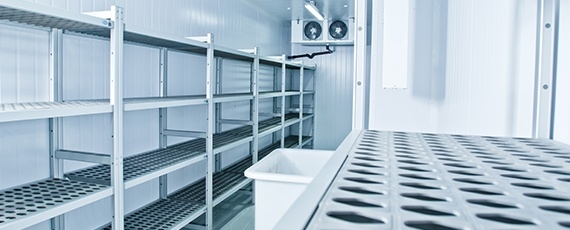Tips to help minimise the risks associated with EPS panels

Expanded polystyrene (EPS) panels, while a cost-effective and lightweight construction material, are also known for their highly flammable temperament. This heightened risk of fire and subsequent property or stock damage for businesses that store, freeze and chill products have caused property insurance premiums to rise over the past four years.
Marsh has developed the following tips to help manage the combustible risks associated with installed EPS panelling.
Implementing an EPS Risk Management Program
Controlling potential fire inception points and fuel loads is a critical factor in mitigating the risk of significant loss due to EPS. Ensuring your business has in place an effective risk management program will assist in reducing such exposures.
We recommend incorporating the following key elements into your risk management program to help manage associated EPS panelling risks effectively.
- Review current housekeeping practices and adopt processes that minimise the possibility of fire inception, such as storing combustibles away from your cool room.
- Schedule regular inspections of panels and ensure prompt repair of damaged sections which expose the polystyrene core.
- If it is necessary to cut core holes in a section of your panels for service, flues or other piping requirements, ensure the exposed EPS is sheathed or a collar is fitted.
- Educate staff and management on the potential problems associated with EPS through risk awareness training.
Thermal Imaging
Thermal imaging is an effective tool in identifying potential hotspots, which are directly linked to and are a common cause of electrical fire outbreaks.
As a proactive risk management measure, it’s important businesses undertake thermal imaging of all relevant electrical components, including the switchboard, every year as a minimum. Completing a thermal imaging review will also help to ensure your EPS panelling is up to infrastructure standards.
Expansion of Smoke and Thermal detectors
Early detection of a fire outbreak and the immediate response thereafter are both crucial and influential factors in minimising the potential of a fire spreading throughout the property.
It is highly recommended that the use of smoke and/or thermal detectors be expanded to cover the ceiling void, manufacturing building, and bottling room. Your property detection units also need to be monitored, which can be done by connecting them to the site’s siren and/ or alarm system.
Alternative panel materials
There has been continued interest over the years in alternative panel materials. The fire performance of these varies from largely non-combustible (such as mineral fibre) through to combustible panels. Non-combustible sandwich panels utilise core materials such as mineral foams, fibres and aggregates but tend to contain a small quantity of combustible adhesives.
Although typical fire tests solely based on Australian and ISO standards are currently accepted under Australian Building Codes, property insurers will generally only accept the Factory Mutual Research Centre test, which is regarded by the insurance industry as being more representative of the combustibility of sandwich panels.
If alternative types of panels are installed it is important that the documented evidence of the installed panels are available when requested by property insurers. Documentation such as material specification, safety data sheets and fire test results should all be requested from the supplier of the materials, ideally well before a decision to use the particular panel is made.
Keeping your broker across any changes
Finally, keeping your insurance broker or advisor across any changes or updates to your EPS panelling is vital when ensuring your insurance coverage including liability limits accurately match your business cover requirements. Replacing panels with safer materials may help your broker when negotiating a reduction in your premiums.
If you have any queries in relation to this or any other insurance product please don't hesitate to get in contact.
